Copper State Kaleidoscope: Arizona’s Colorful Cultural Mosaic
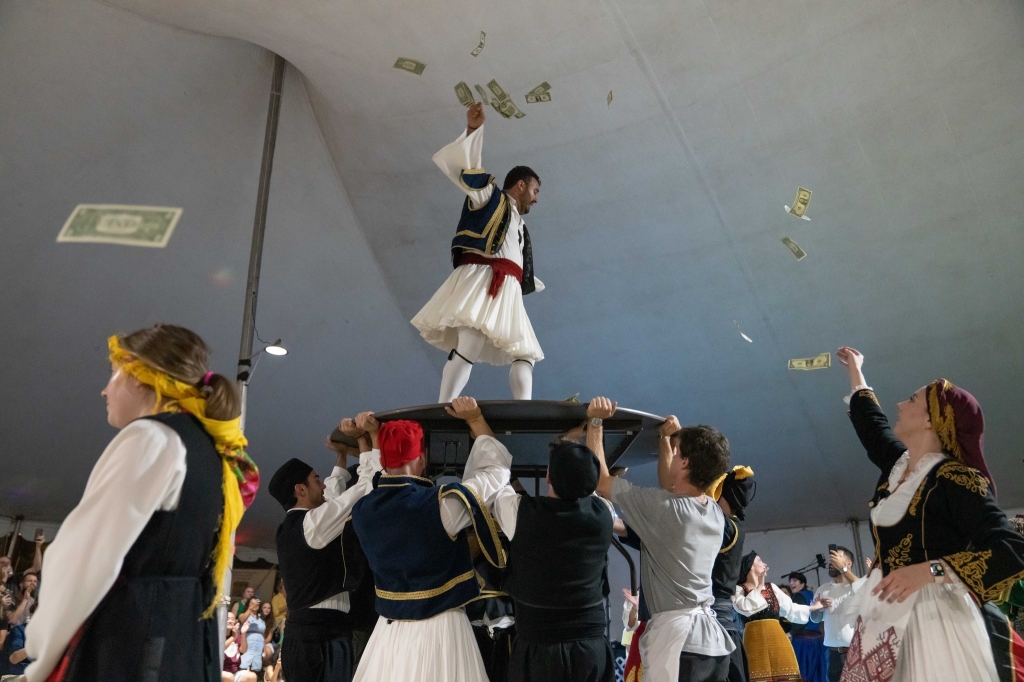
Writer Joseph J. Airdo
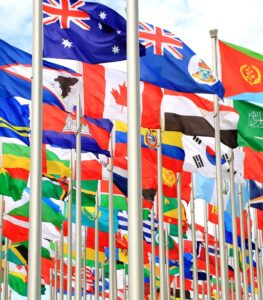


Arizona, long known for its breathtaking natural wonders, is increasingly recognized for its human diversity. From the bustling streets of Scottsdale to the quiet corners of Carefree, the state has become a tapestry woven with threads of cultures from across the globe. Each community, regardless of its size, contributes its unique hues to this rich cultural mosaic.
This diversity is far more than a mere statistic; it’s the very lifeblood of Arizona’s modern identity. It’s present in every sensory experience: the tantalizing aroma of authentic Greek souvlaki wafting from a downtown Phoenix food truck; the rhythmic beats of African drums resonating through a Tempe community center; the dazzling display of Chinese lanterns illuminating a Glendale festival against the backdrop of a Sonoran sunset.
These are the stories of those who’ve chosen to transplant their roots into Arizona’s sun-baked soil. They’ve brought with them not just suitcases, but entire worlds — ancestral traditions, time-honored cuisines and customs as old as the cultures themselves. In doing so, they’ve not only preserved their heritage but have woven it inextricably into the fabric of the Grand Canyon State.
This month, Images Arizona embarks on a journey through Arizona’s cultural landscape. We’ll explore the vibrant communities that have made this desert their home, discovering how they’ve not only adapted to their new environment but have fundamentally reshaped it, creating an oasis of global culture in the heart of the American Southwest.
Saguaros in the Serengeti
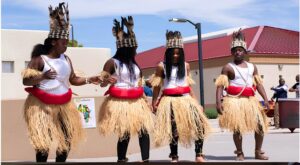


From the vibrant rhythms of Lagos street markets to the sun-drenched savannas of Kenya, the heartbeat of Africa pulses through the desert landscape of Arizona.
“Africans in Arizona are by no means monolithic,” African Association of Arizona leadership explains. “They come from the second-largest continent in the world that comprises more than 1.3 billion people from across 55 countries.”
This diversity is reflected in the more than 3,000 ethnic groups and languages represented, as well as a variety of religious practices including Christianity, Islam, Judaism, Hinduism and indigenous African religions.
Far from being isolated, the African community has become an integral part of Arizona life.
“Not only have Africans in Arizona adequately integrated into the local community, but they continue to contribute substantially to it in innumerable ways,” notes AFASA leadership, adding that Africans’ impact can be seen across various sectors, from education and sports to business and the arts.
One of the most delicious ways Arizonans experience African culture is through food. A “visible proliferation of African restaurants, food trucks and catering services” has introduced locals to the continent’s rich culinary traditions. Imagine savoring the complex spices of Ethiopian injera or the comforting warmth of West African jollof rice — all without leaving the Grand Canyon State.
However, African influence extends far beyond the palate.
“Local African artists and entertainers have added to the Arizona cultural landscape by introducing diverse musical styles, such as Afrobeat and African hip-hop, dance and visual arts,” shares AFASA leadership, noting that these artistic expressions provide a vibrant soundtrack and colorful backdrop to Arizona’s cultural scene.
For those seeking a deeper dive into African heritage, AFASA has been organizing annual festivals since 1998. These family-friendly events, which can draw up to 5,000 attendees, offer a multisensory experience of African culture. From traditional dances to artisanal crafts, the festivals serve as a bridge between cultures, fostering understanding and appreciation.
AFASA leadership adds that local Africans are “active in various sectors of the state’s economy, including academia, medicine, engineering, law, education and information technology.” Their entrepreneurial spirit has led to the establishment of businesses across multiple industries, contributing to job creation and economic growth.
This influx of talent and diversity hasn’t gone unnoticed.
“African entrepreneurs and African-owned enterprises are contributing to the local economy through revenue generation, taxes, job creation, economic growth and more,” AFASA leadership says.
As we look to the future, the African presence in Arizona seems poised for continued growth and integration. Despite occasional challenges, AFASA remains optimistic.
“Africans, in general, are pathological optimists,” the association’s leadership explains. “Consequently, despite the occasional hiccups and discomforts experienced by Africans in the local community, the future of Africa in Arizona looks promising.”
Camels Among the Cacti
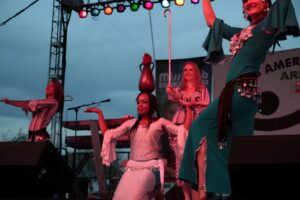


When the Arizona sun dips below the horizon, painting the sky in a tapestry of gold, crimson and indigo, one can’t help but be reminded of the enchanting tales of “Arabian Nights.” In this desert landscape, so reminiscent of distant dunes, Arab culture has not merely found a home — it has discovered a vibrant canvas upon which to weave its rich traditions, flavors and melodies.
“The presence of the Arab community in Arizona is prominent throughout various areas in the state, with a larger concentration across the greater Phoenix metropolitan area,” says Ainor Elgamal, speaking on behalf of the Arab American Organization, a nonprofit that has been at the forefront of preserving and promoting Arab culture in Arizona since 2008.
“The Arab community of Arizona primarily consists of individuals from Egypt, Iraq, Somalia and Syria, which cultivates a diverse and ethnically rich community that influences and is influenced by the Arizona landscape.”
This cultural exchange is evident in the state’s culinary scene, where the aroma of shawarma and the sweetness of baklava mingle with the scent of sizzling fajitas and prickly pear margaritas. Arab-owned restaurants and businesses dot the cityscape, offering Arizonans a taste of the Middle East without leaving the Southwest.
But the Arab influence extends far beyond the dinner table. The AAO has been instrumental in creating spaces for cultural celebration and education. Its crown jewel events, the Arab American Festival and the Miss Arab USA pageant, have become fixtures in Arizona’s cultural calendar.
“The Arab American Festival is a festival intended to bring together families and members of the community to learn more about Arab culture through food, entertainment, games and various other activities,” Elgamal shares.
Held annually at Steele Indian School Park, the festival transforms a corner of Phoenix into a bustling souk, alive with the sounds of oud music and the colorful swirl of traditional dance.
Meanwhile, the Miss Arab USA pageant offers a unique platform for young Arab American women.
“The pageant redefines the image of the Arab woman as a leader and a vital partner in the development of the Middle East and the world,” says Elgamal, noting that the event is not just about beauty; it’s a celebration of heritage, intellect and humanitarian spirit.
Beyond these marquee events, the Arab community contributes to Arizona’s cultural landscape in myriad ways. From the monthly Arabian Nights gatherings that pulse with music and laughter to the quiet dedication of Arab American professionals in fields ranging from medicine to education, the community’s impact is felt across the state.
“As more Arabs make their way to Arizona, the future of Arab culture will become more enriched and diverse here, as Arizona is home to an already diverse landscape that promotes culture and uniqueness,” Elgamal predicts.
Wasabi in the Wild West
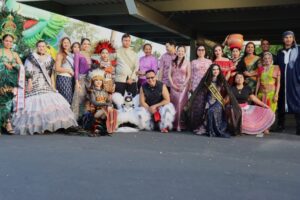


From the fragrant aromas of authentic pho kitchens to the serene beauty of Buddhist temples, Asian culture has become an integral part of Arizona’s diverse tapestry.
At the forefront of promoting Asian culture and fostering understanding between communities is the Arizona Asian American Association. Founded in the late 1980s, the organization has been instrumental in showcasing Asian heritage to all Arizonans.
“The Asian community is a rapidly growing population in Arizona,” the association’s leadership notes. “The different ethnicities of Asians are also quite diverse. The Arizona Asian American Association engages more than 20 different Asian ethnicities. Asians represent an integral segment of society in the workforce, economic buying power and also social and political influence.”
AAAA’s flagship event, the Asian Festival, was a pioneering effort in the state, significantly expanding the association’s reach into partnerships and collaborations with corporations, sports entities and the Musical Instrument Museum.
But the cultural offerings extend far beyond this single festival. Throughout the year, Arizona’s Asian communities celebrate a plethora of holidays and traditions, many of which date back centuries.
“There are significant holidays within each Asian ethnic community,” AAAA leadership explains. “These are time-honored traditions. Some of the holidays, ceremonies and rituals extend back to antiquity. With each, we honor our ancestors.”
The AAAA’s mission goes beyond mere celebration. It strives to preserve and evolve the indigenous cultures of its ancestors, creating a bridge between the old and the new, the East and the West.
“Culture, civics, social issues, fellowship and assimilation are the common bonds,” the association’s leadership notes.
For many Asian Arizonans, this cultural identity is more than just a set of traditions — it’s an integral part of who they are.
“Asian ethnicity is not a choice but rather something we are born as,” AAAA’s leadership reflects. “It’s in our DNA. It is our values, ethics and dedication to family that define our culture.”
As Arizona continues to grow and evolve, its Asian communities are poised to play an increasingly significant role. Their contributions — from cuisine to commerce, from art to innovation — are helping to shape a more diverse, vibrant and globally connected Arizona.
Tea at High Noon



From the clinking of pint glasses in authentic pubs to the fluttering of Union Jacks during royal celebrations, Arizona has embraced a surprising slice of British charm amid its desert landscape. This unexpected cultural fusion has transformed parts of the state into a home away from home for British expatriates and Anglophiles alike, offering a unique blend of Southwest hospitality and British tradition.
Jo Gemmill, owner of the English Rose Tea Room in Carefree, remembers her initial culture shock upon arriving in Arizona more than two decades ago.
“As a Brit arriving in Arizona more than 20 years ago, I was shocked to find a piece of my home country right here in the middle of the desert,” says Gemmill, pointing to the incongruous sight of the London Bridge in Lake Havasu City as a prime example of this cultural crossover.
For British transplants like Gemmill, finding familiar touchstones can ease the transition to life in a new country.
“I think whenever people from other nations move to a different country, there is a certain familiarity and quelling of homesickness if you can seek out and find things that remind you of home,” she explains.
One of the most prominent British imports to take root in Arizona is pub culture. Establishments like George and Dragon English Pub in Phoenix have brought a taste of U.K. nightlife to the Valley. However, Gemmill notes some key differences.
“The pubs in England have the benefit of the patina of time: worn floors, aged bricks, historical buildings and the distinctive smell of years of serving beer,” she says. “In Arizona, the British pub culture seems to focus more on the popularity of British sport, namely soccer.”
Culinary offerings also play a significant role in maintaining British culture in Arizona. Fish and chips shops, like the now-closed Cod Father and the upcoming Englishman Fish & Chips (served from a stationary London bus), have satisfied cravings for this classic British comfort food.
“Cod and chips with a healthy serving of mushy peas … the tang of malt vinegar and the taste of beer batter immediately transports me back to my local chippy at home,” Gemmill fondly notes.
Gemmill’s own English Rose Tea Room has become a focal point for British culture in the state since its opening in 2002. The tea room has hosted numerous events celebrating British milestones, from royal weddings to Queen Elizabeth II’s Platinum Jubilee.
“The popularity of the English Rose Tea Room has been overwhelming,” Gemmill says. “Now it seems everyone in the state has heard of us.”
The connection between Arizonans and British culture deepened following Queen Elizabeth II’s death.
“The outpouring of grief and personal support was amazing,” Gemmill recalls. “The public responded to the tea room and to me personally in such a profound and caring manner it was as if my own relative had died. That was a turning point for me in how embedded British culture has become in Arizona.”
Despite the cultural differences, Gemmill has found a warm welcome in Arizona.
“Americans and Brits will always have a kindred spirit,” she says. “I have never felt like an outsider living here in Arizona. I have only ever encountered warm and friendly people, some of whom have a fascination with Britain, all things royal and, of course, the English accent!”
Tulips in the Tumbleweed
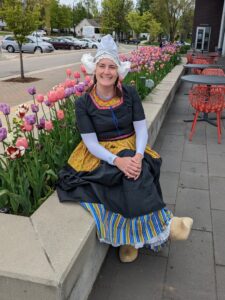


In a land where saguaros stand sentinel instead of windmills, a small but mighty Dutch community has planted roots, infusing the Arizona desert with its rich heritage and entrepreneurial zeal.
“The Dutch community in Arizona is very small, with around 1% of the state’s population being Dutch,” says Ilse Chaigneau, a Dutch native who has called Arizona home for more than six years.
Despite their small numbers, the Dutch have woven themselves into the fabric of Arizona life, bringing with them a rich tapestry of traditions and a dash of European flair. One organization keeping Dutch culture alive in the desert is the Dutch Connection of Arizona. This active group hosts events that transport attendees straight to the canals of Amsterdam, if only for a day.
“Its main events are King’s Day, which celebrates the king’s birthday and is a huge celebration in the Netherlands, and Sinterklaas, who is the Dutch equivalent of Santa Claus,” Chaigneau explains.
Imagine the surprise of seeing Sinterklaas, complete with his colorful helpers, navigating the arid Arizona landscape instead of the canals of Amsterdam. It’s a sight that perfectly encapsulates the unique blend of cultures in the state.
But it’s not just about celebrations. The Dutch influence in Arizona runs deeper, touching various sectors of the state’s economy and society.
“There are several Dutch companies that have operations in Arizona,” Chaigneau notes. “For example, ASML, ASM International, NXP and Philips Healthcare are actively involved here, some of them for decades.”
These companies contribute significantly to Arizona’s economy, with exports from Arizona to the Netherlands valued at about $618 million. The Netherlands ranks as Arizona’s seventh-largest export partner and ninth-largest import partner, accounting for more than 8,700 jobs in the state.
Even the skies above Arizona have a touch of Dutch influence.
“It is also a point of Dutch pride that an increasing number of pilots from the Royal Netherlands Air Force are receiving their training in Arizona,” Chaigneau adds.
Despite their contributions, the Dutch community in Arizona maintains a low profile.
“The Dutch are very open-minded and easygoing, which is probably why many enjoy living in Arizona,” Chaigneau says. “This is probably also the reason that the Dutch adapt to where they live, and although they hold on to some traditions, they are also very happy to enjoy new ones.”
This adaptability doesn’t mean forgetting their roots, however. Chaigneau herself works to keep her heritage alive.
“I am proud to be Dutch, and it is my mother tongue,” she explains. “I work to keep my language skills by reading, speaking and doing crossword puzzles in Dutch … [and] cook Dutch meals for my family and friends.”
Parlez-vous Phoenix?



From the melodic sounds of French conversations in local cafes to the aroma of freshly baked croissants wafting through farmers’ markets, Arizona’s French community has transformed parts of the state into a surprising oasis of French culture, thousands of miles from the banks of the Seine.
The roots of the state’s Francophone presence trace back to the 1980s when major corporations like Honeywell and STMicroelectronics brought French expatriates and their families to Phoenix. This influx sparked a need for French education, leading to the establishment of the International School of Arizona in 1997.
“Still going strong today, it caters to students from preschool to middle school,” explains Leanne Debeurre, a member of the French community who has called Arizona home for the past 37 years. “Other French schools have popped up around the Valley to keep up with demand.”
At the heart of Arizona’s French cultural scene is the Alliance Française of Greater Phoenix, founded in 1987. This nonprofit organization, part of a global network dating back to 1883, has become a cornerstone for French language education and cultural exchange.
“It would be very difficult to search for French cultural organizations in the Valley and not have the Alliance Française of Greater Phoenix bubble to the top of the list,” says Debeurre, who serves as the organization’s vice president and treasurer.
The Alliance Française of Greater Phoenix offers a variety of activities that bring a touch of Paris to the desert. From lively Bastille Day celebrations to sophisticated Beaujolais nouveau wine tastings, these events provide a platform for both French speakers and Francophiles to immerse themselves in the culture.
One standout event is the annual Night of Ideas (La Nuit des Idées), a global initiative in which Francophone organizations worldwide engage in debates on pressing issues.
“Last year, our theme was water usage and conservation in Arizona, and this year the discussion was around how cutting-edge technologies are changing the face of Phoenix,” Debeurre shares.
But the French influence extends beyond organized events. It’s woven into the fabric of Arizona’s culinary scene, with French restaurants like Vincent’s on Camelback having welcomed U.S. presidents and other dignitaries over the years.
Perhaps the most intriguing testament to the enduring Franco-American friendship lies in an unexpected place — the McCormick-Stillman Railroad Park. Here, visitors can find a piece of the Merci Train, a gift from France to the United States following World War II.
“This is a story that needs to be remembered as a way of highlighting the friendship between the two cultures,” Debeurre emphasizes.
Looking to the future, the French presence in Arizona shows no signs of waning. The recent addition of direct flights from Phoenix to Paris by Air France underscores the growing connection between the two cultures.
“I believe that we will see the presence of French and French-speaking people continue to prosper and flourish here,” Debeurre predicts. “As you can see, we have the infrastructure, the support, the companies and the cultural activities to meet the needs of all.”
Sonoran Souvlaki
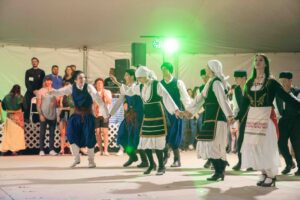


From bustling Greek restaurants to the towering domes of Orthodox churches, Arizona’s Greek community has transformed the Southwestern landscape into a vibrant celebration of Hellenic culture.
“The Greek culture and community is interwoven into the daily life of many Arizonans,” says Presbyter Father Alexander Eliades of Holy Trinity Greek Orthodox Cathedral. “A drive down the main avenues of Phoenix in the early ‘30s and ‘40s would find you spotting many important restaurants, stores and shops owned and operated by Greeks.”
The story of Greeks in Arizona began in 1909 when brothers Charles and Chris Sanichas arrived in Phoenix from Chicago. As the city’s population hovered around 11,000, these pioneering siblings opened fruit and confectionery stores downtown, setting the stage for a vibrant community that would flourish in the decades to come.
Today, that community’s spirit is perhaps best exemplified by the Original Greek Festival, a Phoenix tradition for more than six decades.
“Our biggest event brings in thousands of Arizonans and introduces them to Greek food, drinks, pastries, music and dancing,” Eliades explains. “It’s an extravaganza of Greekness that is overflowing with love, staffed by our parishioners.”
The festival, which this year will be held on October 11–13, is a sensory delight. Visitors can tour the stunning Holy Trinity Greek Orthodox Cathedral, sample homemade Greek delicacies and witness performances by youth dance troupes.
“Our Greek dance program has about 90 of our youth who learn dances from many regions of Greece and love to put on a show and show off their culture to our patrons,” Eliades says.
But the influence of Greek culture in Arizona extends far beyond this annual celebration. Greek Americans have long been active in local politics and business, bringing their renowned work ethic and entrepreneurial spirit to the Grand Canyon State.
“The Greeks here in Phoenix were opportunists who came from Chicago and other parts of the country, seeing Arizona as a land with the capability of flourishing to the extent it has today,” Eliades notes.
This spirit of “philoxenia” – literally “love of stranger” or hospitality – permeates the Greek American community’s interactions with their fellow Arizonans. Whether through the charitable works of the church’s Philoptochos Society, the preservation efforts of the Hellenic Museum of Phoenix or simply the warm welcome extended to visitors at local Greek-owned businesses, the community continues to enrich the state’s cultural landscape.
As Arizona looks to the future, the Greek community remains committed to preserving its heritage while embracing its role in the state’s diverse tapestry.
“I don’t see the Greek culture going anywhere soon as it brings in so many to the church and is such a beautiful part of the community,” Eliades reflects. “Whatever happens, we hope you are a part of it in some form or fashion.”
Emerald in the Desert
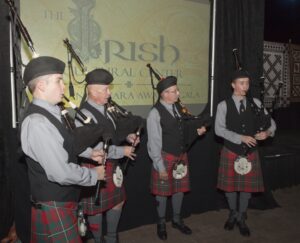


Arizona is home to a vibrant and growing Irish community that is painting the desert landscape with shades of green, infusing the Southwest with the spirit of the old country. From bustling St. Patrick’s Day parades to quiet corners in local pubs where Gaelic whispers blend with the twang of country music, Irish culture has found an unlikely but welcoming home in the state.
“Maricopa County is home to the fourth-largest Irish population in the country, based on the latest U.S. Census data,” says Ciara Wittkowski, operations director at the Irish Cultural Center and McClelland Library in Phoenix. “With the major tech companies in the Valley bringing expatriates to the state, our Irish population is growing rapidly.”
This burgeoning community has woven itself into the fabric of Arizona life, bringing with it a rich tapestry of traditions, events and cultural contributions. At the heart of this cultural exchange stands the Irish Cultural Center, celebrating its 25th anniversary this year.
“We provide more than 100 events a year to the Arizona community that foster cultural appreciation and education,” Wittkowski explains.
These range from youth summer camps focused on Irish dance and music to genealogy workshops and concerts featuring Irish artists. One of the center’s most significant events is the annual St. Patrick’s Day Parade and Faire, a tradition spanning more than four decades.
“This family-friendly event is hosted in Hance Park and at the Irish Cultural Center and McClelland Library and welcomes thousands of patrons each year,” Wittkowski says.
But Irish culture in Arizona isn’t confined to March 17. Throughout the year, the center hosts events that highlight different aspects of Irish history and tradition.
“For 20 years, we have hosted a ‘1916 Easter Rising Commemoration,’ which highlights Ireland’s rebellion against British rule and eventual independence,” Wittkowski notes.
The center also shines a light on lesser-known aspects of Irish history. This year, it’s reviving its Irish in Latin America exhibit, which includes a section on the San Patricios, a group of Irish soldiers who fought for Mexico during the Mexican-American War.
Beyond the center, Irish culture permeates Arizona in various ways. The state boasts six Irish sister cities, from Phoenix’s partnership with Ennis in County Clare to Tucson’s connection with Roscommon. These relationships foster cultural and economic ties between Arizona and Ireland.
For many in the Irish community, local pubs serve as more than just watering holes.
“The Irish pub is essential to the Irish ecosystem,” Wittkowski explains. “For many immigrants, these places serve as the first point of contact to their new home — connecting with people with a similar backstory or networking to find new connections or jobs.”
Sports enthusiasts can even catch traditional Irish games, thanks to the Brian Boru GAA team, which plays hurling and Gaelic football in Arizona.
As a first-generation Irish American, Wittkowski sees a bright future for Irish culture in Arizona.
“Ireland’s presence in Arizona will only continue to grow,” she predicts. “I hope one day to see a direct flight to Ireland like London and Paris now have.”
With the recent establishment of the Arizona-Ireland Trade Commission, which aims to promote business and academic exchanges, the bonds between Arizona and Ireland are set to strengthen further.
“We’ve lost quite a few important members of our community this year and over the last few years,” Wittkowski reflects. “I hope to honor their legacy and continue the work done by so many before me to showcase our slice of Ireland in the desert.”
Spaghetti Western
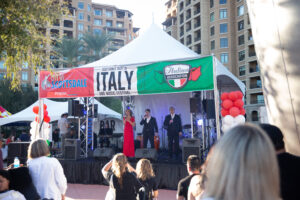


Whether you’re savoring a perfectly crafted espresso, learning to roll homemade pasta or simply enjoying the strains of an Italian aria floating on the desert breeze, the spirit of Italy is alive and well in the Southwest.
The roots of this vibrant community stretch back to the late 19th and early 20th centuries, when Italian immigrants, lured by opportunities in mining, railroads and agriculture, first set foot on Arizona soil. Over time, they established close-knit communities in Phoenix and Tucson, laying the foundation for a lasting Italian presence.
Today, the Italian Association of Arizona stands as a testament to this enduring legacy. Founded in 2013, the nonprofit organization has become the beating heart of Italian culture in the state.
“We work on promoting Italian culture and heritage through various cultural, social and educational activities,” says Rosa Torraca, treasurer and board member for the association.
These activities paint a vivid picture of Italian life in the desert. Happy hour gatherings buzz with animated conversations in both English and Italian. Wine-tasting events transport attendees to the sun-drenched vineyards of Tuscany and Piedmont. For those eager to master the language of Dante, the association offers Italian classes led by Arizona State University professors and other instructors.
But perhaps the crown jewel in the association’s cultural calendar is the annual Italian Festival. Set against the backdrop of Scottsdale’s picturesque waterfront along the Arizona Canal, this two-day extravaganza is a feast for the senses.
“We will be bringing some great local Italian restaurants so attendees can experience delicious cuisine, cannoli, gelato and much more, supporting local hardworking Italians who share traditional recipes from their own Italian regions and bring a taste of Italy to Arizona,” enthuses Torraca, noting that this year’s event is scheduled for Oct. 19 and 20.
The festival, now in its ninth year, goes beyond mere gastronomy. It’s a celebration of all things Italian — from fashion shows that showcase the latest Milan trends to wine tasting areas that rival the finest enotecas. Live music fills the air, transporting visitors to the bustling piazzas of Rome or the romantic canals of Venice.
Yet, the association’s impact extends far beyond cultural celebrations.
“We also work on community volunteer events, with the most popular being the pizza-making event through St. Vincent de Paul in Phoenix,” Torraca notes.
This blend of Italian tradition and local community service epitomizes the association’s commitment to enriching Arizona’s social fabric.
Looking to the future, the Italian Association of Arizona has big aspirations.
“Our ultimate dream and goal [is] to have our own Italian cultural center in the Valley,” Torraca shares.
Envisioned as “Arizona’s own Little Italy,” this center would serve as a hub for cooking classes, language instruction and cultural events, further cementing the Italian community’s place in Arizona’s multicultural landscape.

